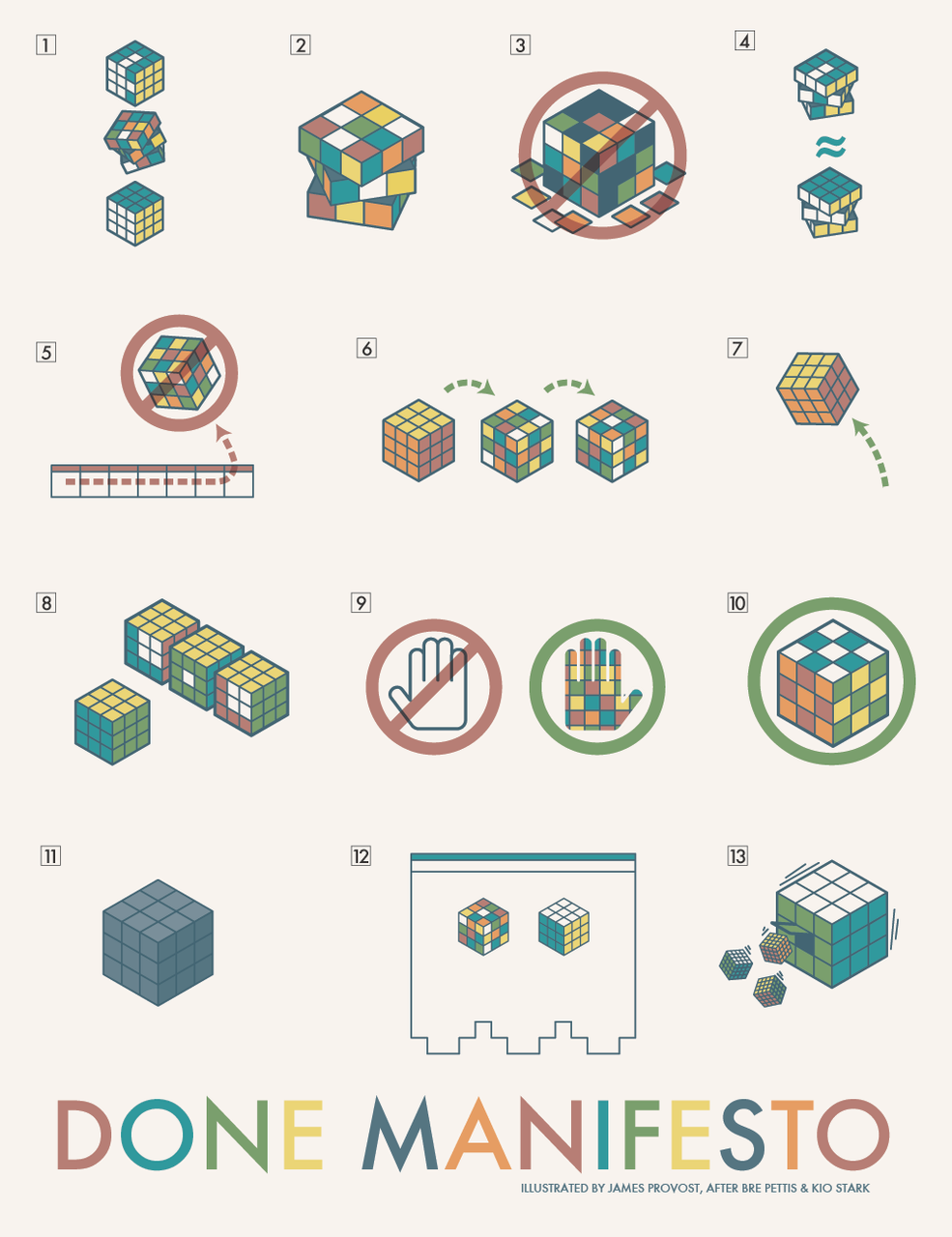Links and write-ups about beautiful things from around the web!
-
An Appreciation of Ted Cassidy
(video no longer available)
Follow me. Ted Cassidy is one of my favorite sitcom actors. Few people seem to know that he also played “Thing” on the Addams Family tv show! (why the show’s producers got the 6’9″ guy to cram himself under whatever table / Victrola / box that Thing pops out of instead of just hiring a second actor, I don’t know)
-
Bohemian Rhapsody performed by old PC equipment
A thing of beauty.
-
The DONE Manifesto

- There are three states of being. Not knowing, action and completion.
- Accept that everything is a draft. It helps to get it done.
- There is no editing stage.
- Pretending you know what you’re doing is almost the same as knowing what you are doing, so just accept that you know what you’re doing even if you don’t and do it.
- Banish procrastination. If you wait more than a week to get an idea done, abandon it.
- The point of being done is not to finish but to get other things done.
- Once you’re done you can throw it away.
- Laugh at perfection. It’s boring and keeps you from being done.
- People without dirty hands are wrong. Doing something makes you right.
- Failure counts as done. So do mistakes.
- Destruction is a variant of done.
- If you have an idea and publish it on the internet, that counts as a ghost of done.
- Done is the engine of more.
-
There Are Only Two Reasons to Show an Error
There are only two reasons to show an error message:
1. The customer has entered something that the system can’t accept, so the customer can’t continue (for example, a mismatching username and password). This kind of message should clearly and succinctly tell the customer what happened, how to fix it, and then move on.
2. Something very, very bad has happened to the system, so the customer can’t continue (e.g., an essential server just got smote by lightning). This kind of message should be very apologetic and should give the customer some alternate way of contacting you.
There are no other reasons to show an error message. If you show something that looks like an error message in order to market something to the customer, you are a bad person.
James Reffell, quoted in Web Form Design: Filling in the Blanks by Luke Wroblewski, p195. -
Étienne-Jules Marey
Pioneer of medical instruments, photography, and cinema. Took some very interesting early photographs in his research of animal locomotion and physionomy, which led to his successor Muybridge’s famous collections of plates.
-
Instead of Causing Us to Remember the Past Like
Instead of causing us to remember the past like the old monuments, the new monuments seem to cause us to forget the future. Robert Smithson, quoted in Artforum International XLVII, No. 6, February 2009, p174.
-
In College I Focused on Printmaking a Lot of My
IN COLLEGE, I focused on printmaking. A lot of my work is actually a kind of reaction to printmakers. They’re territorial and they don’t understand art the same way I do. They look at it pictorially and miss the essence of what they do, which lies in the technical process – using specific chemicals and materials and pressing them together. You can control that in certain ways; you can do things graphically and physically that are worth doing as an artist. Printmaking is an easy way to get going. It’s procedural. It’s like the process of a singer warming up, preparing, thinking; that’s how Keith Richards writes songs, in the process of tuning his guitar. I’ll sit here and paint any number of silk screens. They change as I print. The ink falls out and some more comes through and so on, as I use it again. Josh Smith, in Josh Smith Talks About Currents 2008–, Artforum International XLVII, No. 6, February 2009, p162.
-
Nothing in Art Is Created Without Effort and the
Nothing in art is created without effort, and the painter’s ideas don’t come to him on wings while he dreams, either. The one may be more talented than the other, of course; but without untiring diligence, single-mindedness and a combative spirit, there can’t be any good result. All this talk about ‘inspiration’ is nonsense. Arnold Böcklin
-
A Great Many Things Keep Happening Some of Them
A great many things keep happening, some of them good, some of them bad. The inhabitants of the different countries keep quarrelling fiercely with each other and kings go on loosing their temper in the most furious way. Our churches are attacked by the heretics and then protected by the Catholics; the faith of Christ burns bright in many men, but it remains lukewarm in others; no sooner are church buildings endowed by the faithful that they are stripped again by those who have no faith. However, no writer has come to the fore who has been sufficiently skilled in setting things down in an orderly fashion to be able to describe these events in prose or in verse. St Gregory of Tours, Historia Francorum (History of the Franks), 6th Century AD.
-
In a Sense New York New York Was Legally No
In a sense, New York / New York was “legally” no longer a condensed Manhattan. Nor was it a movie set (that would have been a different suit altogether). It was essentially a souvenir of the kind that you dropped in your beach bag; but now ballooned out into a monument the size of a casino/hotel. It stood in memoriam to tourists not quite remembering which building went where. It was a monument to condensed memorabilia. Norman M. Klein, in The Electronic Baroque: 1955-2050. From The Vatican to Vegas, 2004 p346.
